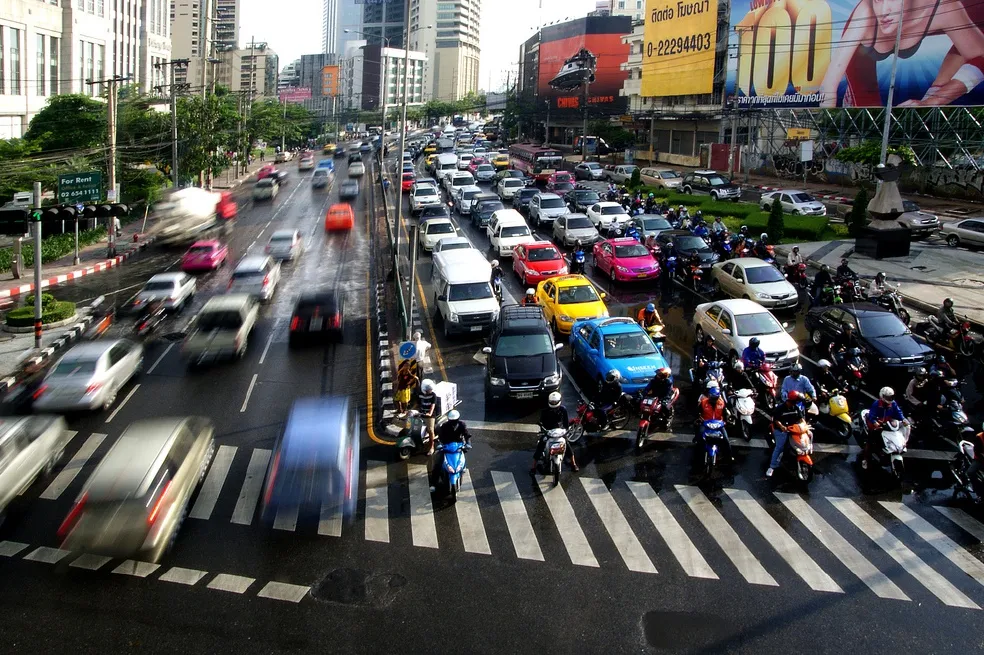A study published in the magazine "PLOS One" revealed the relationship between auditory pollution and diabetes in mice.What does it mean for us?
The noise of sick cities.This is a reality that since the sixties is in the radar of scientists and environmental authorities and every so often they collect new information to combat the phenomenon.
In a study of more than 10 years carried out in Denmark, for example, it was determined that for every 10 decibels (dB) more noise caused by traffic, the risk of diabetes increased by 11 %, and in 14 % if the individual wassubject to noise for five years.The research was published in 2013 in the Environmental Health magazine and added diabetes to the long list of human health effects caused by noise.Even the World Health Organization has a recommended 55 dB limit since 1999.
The most recent study of the Institute of Sciences of the University of Nanjing, China, adds to the scientific evidence that relates diabetes to auditory pollution.
Since 2013, this group of scientists proved that exposure to 95 dB daily influences glucose production and creates insulin resistance.That is, it is associated with a greater risk of type 2 diabetes mellitus (DM2), the most common form of this metabolic disorder, which creates insulin resistance, and that can reduce life expectancy up to 10 years.However, the relationship between noise and diabetes was not clear.
Chinese scientists exposed 64 laboratory mice to a high -fat diet, and 85 dB of noise, four times a day (an average low compared to the 140 dB to which air controllers and construction workers are exposed, among others).The conclusion?The noise did not cause diabetes, but exaggerated it: it worsened the glucose intolerance of mice and created a more violent resistance to insulin.The noise stimulated the accumulation of fat and free fatty acid, which can be risky for arteries tapping.This is the first forceful evidence that noise accelerates the effects of diabetes.
Now that hundreds of epidemiological studies have confirmed until tired) How to make cities lower their decibels?The answer could be in Boston and New York, two of the most noisy cities on the planet.
Erica Walker, a scientist from Harvard University, studies how people are affected by noise, says that “people simply have this general attitude that noise is just a nuisance.It doesn't have to be so. ”Walker realized that Boston DB levels were much higher than those recommended by WHO.In addition, he realized that the effects are different depending on the frequency with which the Bostonians were exposed to a sound.How unpredictable it was and where it came from, they are other variables that took into account.According to the Popular Science portal, another pattern that Walker noticed was that the poorest communities tended to be louder and had a greater amount of low frequency sounds than other areas."If you stop from a bus and pass by you, listen to something, but you also feel that something rumbles on your chest," says Walker.This type of low noise can be misleading because they do not seem very noisy for our ears
That is why he created an application called Noisescore, that people can use to report noise in their community and how they made them feel.
The sound scientist of the University of New York Juan Bello did something similar.According to the portalPopular Science, noise is difficult to handle because, unlike water or air pollution, it leaves traces in the environment.When people complain about construction noise, the city takes days to send an inspector to the site, when the noise has already stopped.The Venezuelan scientist and his colleagues put sensors in Manhattan, Brooklyn and Queens who recorded 10 second fragments to see if the complaints coincided with the noise peaks.Almost 95 % of the complaints coincided.This constitutes at least a tangible test that authorities can use to sanction noise in the city.Slowly, and after 50 years of scientific evidence and urban expansion, pressure for the right to "peace and tranquility" increases.
The architect Antonella Radicchi, for example, designed a map of “silent spaces” in Berlin and uploaded it to an app called Hush City (which is categorized in the Google Apps store under ‘Health’).These measures are barely to contain the phenomenon.“Cities are not designed to take into account the noise they produce.It's time for that to change, ”concludes the architect, in“ Popular Science ”.


